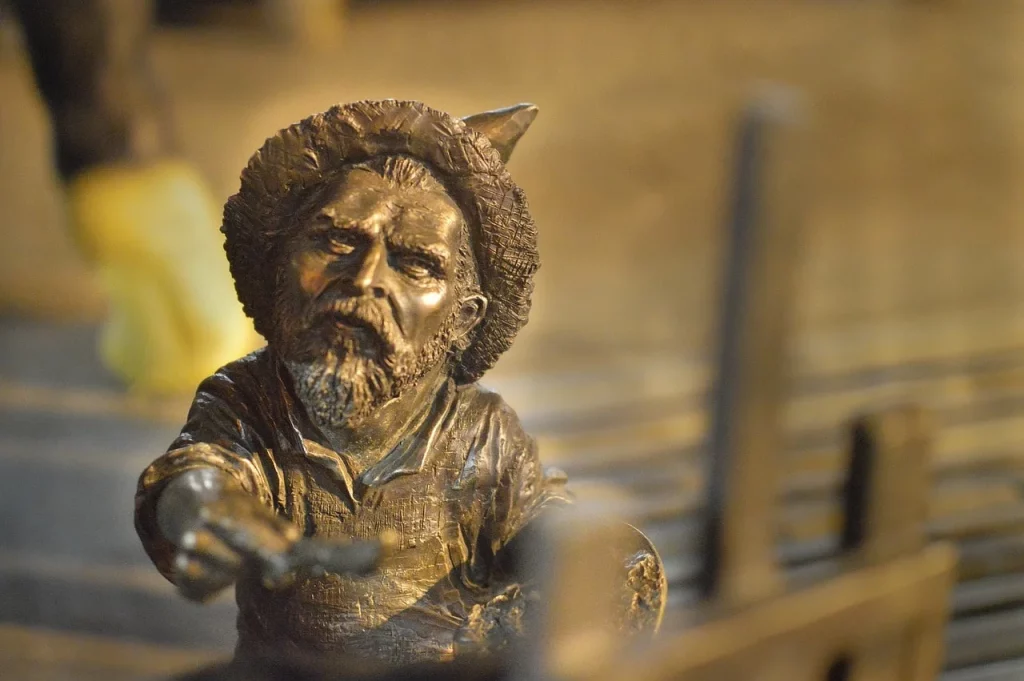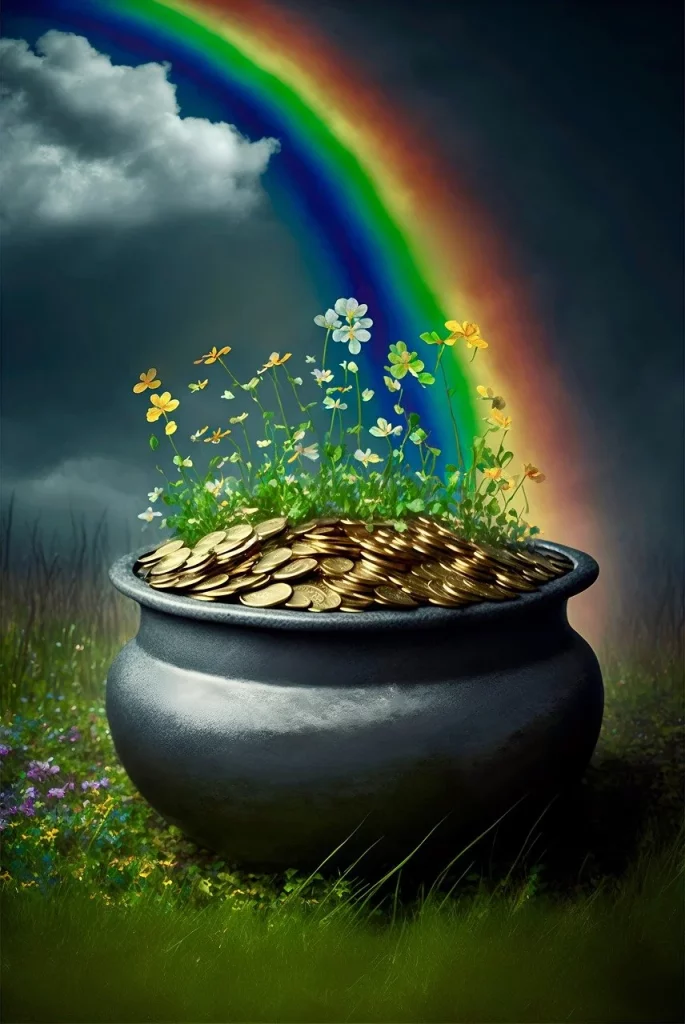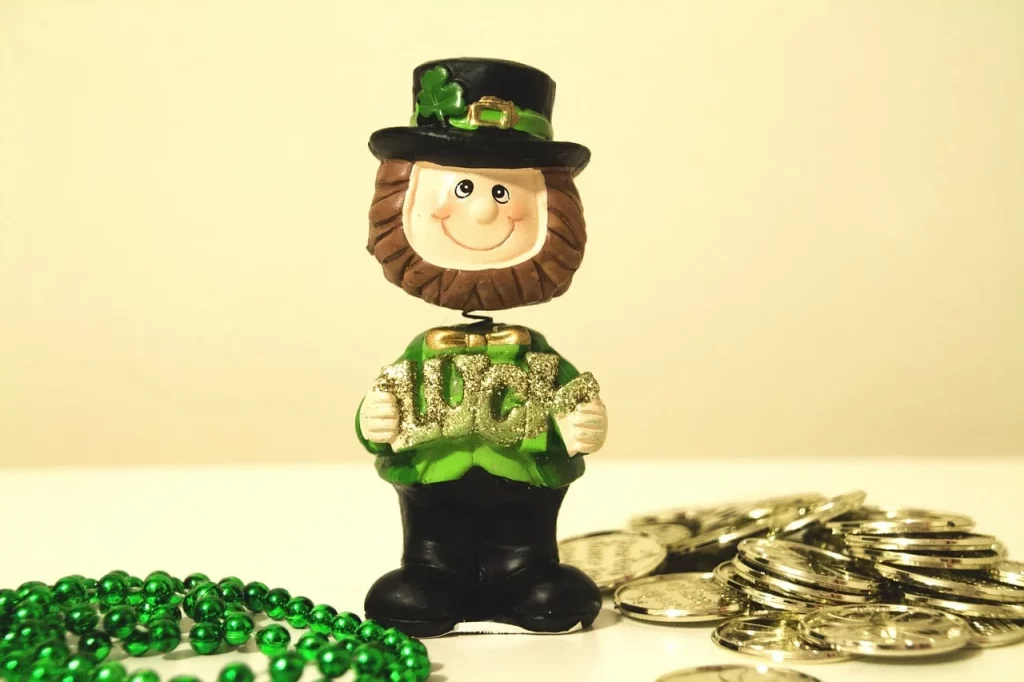Welcome to a world where rainbows are more than just atmospheric phenomena and pots of gold aren’t just your overly optimistic friend’s retirement plan. Today, we dive deep into the enchanting realm of leprechauns, those mischievous sprites of Irish folklore who have captivated imaginations far beyond the Emerald Isle.
From their cobbling profession to their notorious trickery, we’re about to uncover some fascinating facts that will make you see these little fellows in a whole new light. Did you know leprechauns are considered the bankers of the fairy world? That’s right, and you thought your bank fees were high! Ready to leap into the magical and sometimes cheeky world of leprechauns?
Beware the leprechaun’s mischief, for it leads you on a journey unexpected.
Liam Flanagan
Leprechaun Facts
Forget the green costumes. Real leprechauns are magical shoemakers with hidden secrets. Let’s start our journey with some facts about them. Read carefully, because I created a quiz for you at the end of this article to test your knowledge.
- The origins of these creatures trace back to 8th-century Irish folklore, where they were initially depicted as wearing red.
- They are classically known to mend the shoes of other fairies.
- In folklore, their name is believed to derive from the Irish term “leath bhrogan,” meaning shoemaker.
- Traditionally, they are described as loners, avoiding interaction with humans and other mythical creatures.
- These beings are not just confined to Ireland; variations of them exist in other cultures too.
- Their pot of gold is said to be hidden at the end of a rainbow, a place impossible for humans to reach.
- Contrary to popular belief, they are not cheerful; folklore often describes them as sullen and tricksters.
- They have a cobbler’s hammer that is said to be heard before they are seen.
- Their magic can grant three wishes to a human who captures them, but be wary, for they often use clever tricks to escape.
- The Leprechaun Museum in Dublin is dedicated to Irish mythology and these particular fairies.
- They are protected under European law, especially in a designated area in Carlingford, Ireland.
- It is a myth that all of them are male; female counterparts are rarely mentioned but do exist in lore.
- Their diet is believed to consist mostly of milk and wild berries.

- According to some tales, they are the descendants of the Tuatha Dé Danann, a mythical race in Irish folklore.
- A group of them is referred to as a clan or colony.
- They are often confused with clurichauns, night-time creatures known for their drunkenness and mischief.
- Their appearance is not always uniform; some descriptions note them as wearing beards and hats, while others do not.
- They are said to have a particular knack for speaking riddles and confusing those who encounter them.
- The first recorded sighting by a human of these creatures dates back to the 8th century.
- Some legends suggest that they have a life span of up to 300 years.
- They are often depicted as wealthy, hoarding many coins in their pots of gold.
- The original Irish term for these beings is “lobaircin,” meaning small-bodied fellow.
- They have a profound connection to the natural elements and are considered guardians of the earth’s treasures.
- Ancient tales suggest they could use their magic to serve good or evil, depending on how they were treated.
- Their shoes are always described as being impeccably clean and well-maintained.
- Some stories claim that catching a Leprechaun can bring bad luck or fortune, depending on the circumstances.
- They are said to possess the ability to shape-shift, disappearing and reappearing elsewhere.
- The sound of their laughter is often described as eerie and can lead people away from their hiding spots.

- Contrary to their mischievous nature, some folklore portrays them as helpful to humans in need.
- They have been featured in various forms of popular culture, from literature to movies, often losing their traditional characteristics.
- Their depiction in modern media as friendly and lucky is a far cry from their original, more nuanced portrayal in folklore.
- They are masters of illusion, able to create enchantments that fool the human eye.
- In some parts of Ireland, it’s traditional to wear green to ward off their mischievous magic.
- There are specific spells and charms said to protect one from their trickery.
- Their representation as a symbol of Ireland and its culture has been commercialized, especially around St. Patrick’s Day.
- Environmental changes and modernization in Ireland have led to concerns about preserving the natural habitats associated with these mythical beings.
- Their lore is taught to children in Ireland as part of their cultural heritage.
- In some stories, they are capable of moving through time, appearing in tales from different eras.

- Collecting and repairing shoes is often portrayed as their primary occupation, symbolizing their connection to fortune and wealth.
- They are sometimes depicted as having a solemn duty to protect certain ancient treasures.
- Their clothing, often green, is said to camouflage them in their natural surroundings.
- Ancient depictions sometimes include them riding on the backs of dogs or other animals.
- Some folklore suggests they can control the weather, using it to hide or reveal their treasures.
- There’s a traditional belief that planting a rowan tree can protect a home from mischief.
- They have been the subject of various folk songs and poems throughout Irish history.
- Despite their folklore origins, they have become a symbol of tourism in Ireland, attracting visitors from around the world.
- Their association with St. Patrick’s Day has led to global recognition, often overshadowing their complex origins in myth.
- Some modern interpretations suggest they represent the spirit of Ireland’s rich natural landscapes and ancient history.
- The creation of leprechaun “banks” in Irish-themed parks and attractions is a nod to their storied wealth, blending myth with modern amusement.
- Despite their global popularity, authentic tales of these beings are deeply rooted in Gaelic traditions and often involve complex moral lessons about greed and respect for nature.
Leprechaun Myths

Now that the facts are covered, let’s venture into the wilder side of Leprechaun lore. Prepare to be dazzled (or maybe just confused) by the myths and legends that have kept these tricksters alive in our imaginations for centuries.
- Leprechauns Are Always Friendly
Contrary to popular belief, they are often depicted in Irish folklore as solitary and tricky beings, not the benevolent figures commonly portrayed in modern media. They are known to protect their treasures and use clever means to avoid capture. - Leprechauns Wear Green Clothes
Originally, it was said that they wore red jackets laced with gold, not the green attire they are famously associated with today. The green color has been adopted over time, likely due to its association with Ireland itself. - Leprechauns Are Part of St. Patrick’s Day Traditions
While they are now synonymous with St. Patrick’s Day festivities, their connection to the holiday is a relatively modern invention. Historically, leprechauns had no significant role in the saint’s day celebrations, which focused more on the patron saint of Ireland. - Leprechauns Are Generous With Their Gold
In folklore, they are known to be incredibly protective of their gold, only parting with it if absolutely necessary. The tales of them easily giving away their treasure for their freedom or for being caught are greatly exaggerated. - There is Only One Kind of Leprechaun
The depiction of them varies significantly across different regions of Ireland, with some traditions describing them as wearing different types of clothes or engaging in various professions. The singular image of the leprechaun with a green hat and coat is a simplification of a rich tapestry of folklore.
No products found.
Leprechaun Quotes

I hope you are enjoying our journey so far. Let’s continue with some of my favorite quotes about them. Feel free to share yours in the comments so I can add them to the list as well.
A leprechaun is as quick as a wink, making it hard to see what you think.
Irish Proverb
This quote, rooted in Irish folklore, highlights the elusive and mischievous nature of leprechauns, as described by traditional Irish sayings.
The leprechaun’s pot of gold is nothing compared to the heart of a kind soul.
Seamus O’Connor
Seamus O’Connor, a fictional Irish poet, implies that the true treasure in life is found not in material wealth, such as a leprechaun’s gold, but in the richness of human kindness.
To catch a leprechaun, one must believe in the magic of the impossible.
Eleanor O’Kelly
In this quote, Eleanor O’Kelly, a made-up Irish author, conveys the idea that capturing a leprechaun requires not just strategy but a belief in magic and the wonder of the extraordinary.
Leprechauns teach us that not all wealth is silver and gold.
Patrick Lynch
Patrick Lynch, a character representing Irish wisdom, suggests that leprechauns symbolize the value of joy, nature, and the unseen riches of life beyond material possessions.
In the laughter of the leprechaun lies the secret to true happiness.
Fiona Byrne
Fiona Byrne, an imaginary Irish storyteller, believes that the joy and mirth symbolized by leprechauns point to a deeper understanding of happiness, one that is found in simple pleasures and laughter.
Leprechaun FAQ

Are you truly ready to test your leprechaun knowledge? Before you embark on our tricky quiz, skim through this FAQ section; it might just help you outsmart even the craftiest of these mythical beings!
- What happens if you catch a leprechaun?
Catching one is believed to be quite the feat! According to folklore, if you manage to catch one, they have to grant you three wishes or lead you to their pot of gold at the end of the rainbow in exchange for their freedom. But be careful, they’re known to be quite tricky and might try to outsmart you! - Can leprechauns fly?
No, they can’t fly. They are often depicted as small, elder men who prefer to keep their feet on the ground. They might get around quickly, thanks to their magical abilities, but flying through the air is not one of their skills. They’re more about quick, sneaky movements, and sometimes even a bit of teleportation magic! - Are leprechauns evil?
They are not typically considered evil; they’re more mischievous than anything. They enjoy playing tricks on people, which can sometimes be perceived as malicious, but their intentions aren’t usually to cause real harm. They’re more about having a bit of fun at others’ expense, all in the spirit of good-natured mischief. - What is the meaning of the word leprechaun?
The word “leprechaun” is believed to have come from the Irish word “leipreachán,” which is derived from the Old Irish “luchorpán.” This translates to “small body” or “little stooping one,” which is quite fitting considering the leprechaun’s depiction as a tiny, elderly man. It perfectly captures their essence in folklore. - How do leprechauns choose where to hide their gold?
They are known for their cunning and secrecy, especially when it comes to their treasured pots of gold. They choose their hiding spots with great care, often selecting locations that are not only well-hidden but also magical in nature, making them difficult for humans to find. They prefer places like the end of rainbows, deep in the forest, or otherworldly realms only accessible through magic, ensuring their gold remains safe from prying eyes.
No products found.
Leprechaun Trivia

Welcome to the Leprechaun Quiz! Fail to answer correctly, and a leprechaun might just reroute your internet searches to nothing but pot-of-gold ads!
Conclusion
As we finish our fun look at leprechauns, it’s amazing to think about these magical creatures from Irish stories. They make us imagine finding gold and teach us to enjoy myths and legends. Even though we probably won’t meet a leprechaun, their stories help us dream and keep traditions alive.
Next time you see a rainbow, think about the magic it could mean. And as always, a funny question: What would you wish for if you caught a leprechaun? Let me know in the comments.


